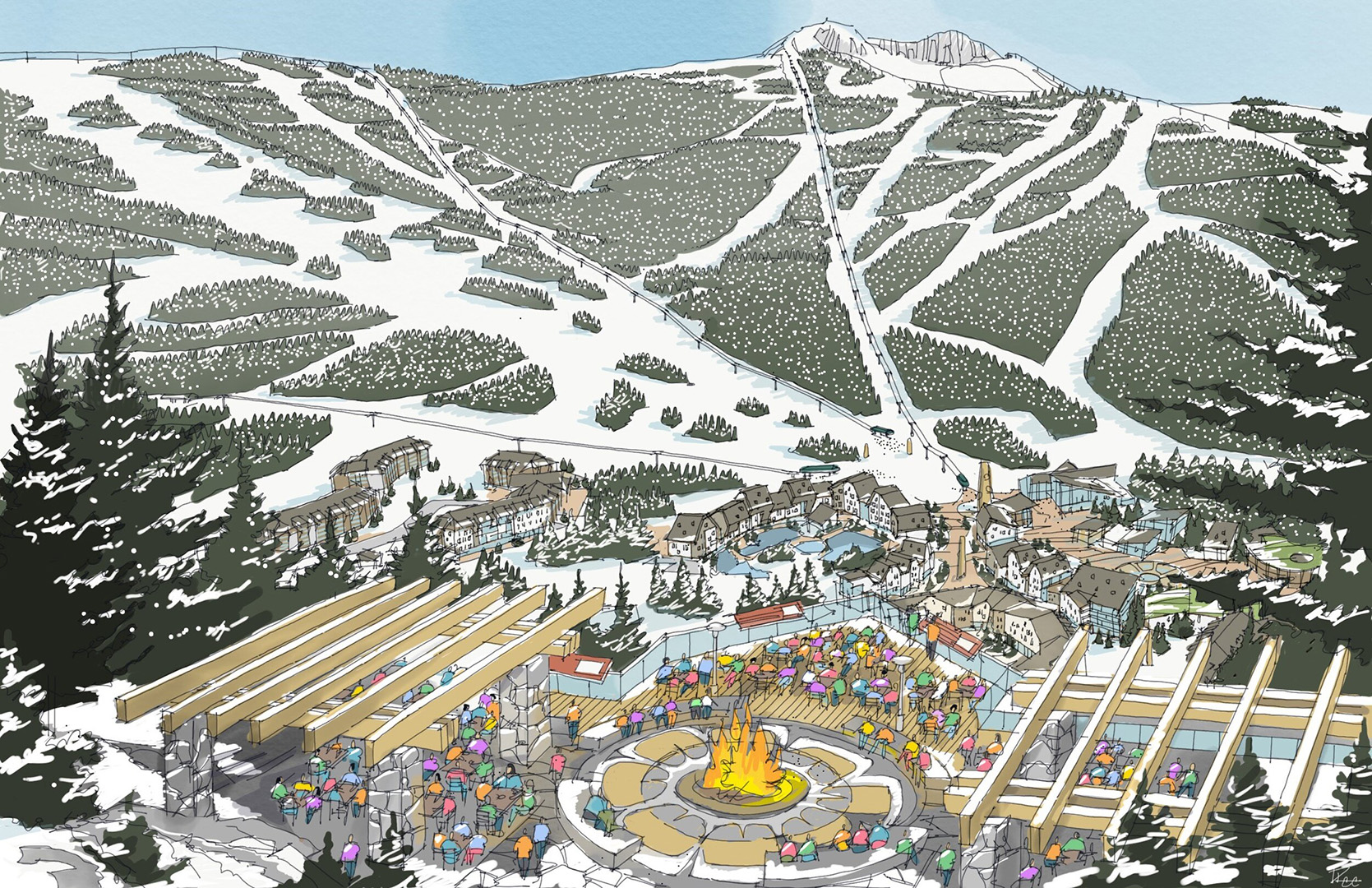
In 1998, I hopped into the passenger’s seat of one of those new Mercedes 190 SUVs that had been imported into Canada and buckled up for a hot, dusty ride on an old logging road to what, I’d been told, would be Canada’s latest four-season destination resort. At the wheel was Wolfgang Richter, the Victoria-born, Hollywood-based entrepreneur who fit the mould of a late-night huckster, Hawaiian shirt and all. At a time when penny stocks on the Vancouver Stock Exchange (once called “the scam capital of the world” by 60 Minutes on CBS), he was the perfect front-man for the enterprise.
Located on the flanks of a dormant stratovolcano, the Garibaldi at Squamish (GAS) resort has emitted an enormous amount of gas over the past 25 years; perhaps none more inflating than Richter’s enthusiastic assurance to me at the time that “we could be open for business as early as 2003!”

Essentially, new investors are being asked to pony up the 20-year plus expenses piled up by Garibaldi at Squamish in order to spend another three to four billion dollars to develop the resort.

Richter clearly had not read, or studiously ignored, a resort feasibility analysis from the mid-1970s that described Brohm Ridge’s steep bluffs and discontinuous fall-lines as “unacceptable” for winter fun and frolic. On the day of our visit, local snowboarders were squatting in the remains of a three-storey Swiss chalet built by a previous dreamer by the name of Adi Bauer, who envisioned a gondola running from Squamish to the meadows below Brohm Ridge.
Eventually, Richter faded from the scene and two of Vancouver’s most prominent developers got involved—the Aquilini family, owners of a portfolio of office buildings as well as the NHL’s Vancouver Canucks, and the Gagliardi family, owners of Grouse Mountain and Revelstoke Mountain Resort. The two families, who have been bitter business foes in the past (the Gagliardis have long held the belief that the Aquilini family went behind their backs to purchase the Vancouver Canucks NHL franchise) put aside their differences and lent money to finance a four-season resort known as Garibaldi at Squamish.
RECESSIONS, CRITICS & COMPLEX APPROVALS
There are myriad reasons as to why GAS hasn’t built a single lift since 2001. Some of it can be explained by an incredibly complex application and approval process set by the provincial government. From the beginning, the involvement of Vancouver’s two most prominent developer families raised eyebrows. In B.C., Crown land is essentially sold at a steep discount by the provincial government on the promise that developers do what they say they will and actually develop a resort. Given Squamish’s explosive growth over the past three decades, the joint bid financed by two major housing developers was seen by some critics at the time merely being a front to build a ‘suburb of Squamish.’
Prior to government approval in 2016, Brohm Ridge’s biggest critics were, in fact, Whistler-Blackcomb, Whistler and Squamish mayors and council, and even the Canada West Ski Areas Association. It’s important to note that the proponents were seeking government approval just after the Great Recession of 2010, when the value of recreational property plunged, taking down notable ski area operators such as Intrawest. There was a not-unrealistic fear that the ‘first money in’ would create an ungodly mess should it happen to fail, not unlike Bauer’s half-built lift towers and Swiss chalet, only on a far grander scale. You know that a project is unpopular when both the local snowmobile club—who now use Bauer’s Swiss chalet as their clubhouse—and the venerable British Columbia Mountaineering Club—the province’s oldest hiking and climbing organization—are both in opposition.
Despite local opposition and what’s deemed a ‘business unfriendly’ New Democratic Party in office, the provincial government’s Environmental Assessment Office worked extremely closely with the GAS team to gain the necessary approvals to begin construction.
In 2020, the cost-estimate for a thirty-year multi-phase build-out stood at $3.5 billion. What the GAS proponents eventually received approval for was breathtaking, to say the least. At build-out in 2040, Garibaldi at Squamish would have 1,635 acres of skiable terrain on 131 trails, 21 lifts, 17,538 visitor capacity, 3,045 staff, and close to 22,000 beds (equivalent to 1,300 hotel rooms, 2,214 condominium units, 840 townhome units, and 1,184 single-family dwellings.
BANKRUPTCY DECLARED IN DECEMBER
In December, Garibaldi at Squamish declared bankruptcy and on January 20th, court documents show that a ‘stalking horse bid’ by the Gagliardis and Aquilinis has priced the resort’s assets at approximately $80 million. Essentially, new investors are being asked to pony up the 20-year plus expenses piled up by Garibaldi at Squamish in order to spend another three to four billion dollars to develop the resort. Quite honestly, if the financial and legal firepower assembled by two of Vancouver’s most successful developers couldn’t make this project work, it’s highly unlikely that any outsiders can. The biggest “if” the project faces, however, is the fact that the Environmental Assessment Office certificate is only good until January of 2026. It’s worth noting that one of the project’s biggest shortcomings—its lack of a reliable water source—took over five years to solve.
There are things about the resort that never really lined up. The advertised 1000-vertical-metre drop is not “straight line”, but zigs and zags along the ridge. While the Village site itself receives more than double the snowfall of Whistler base, snow quality and visibility would be both soggy and foggy. GAS backers made it known that they wanted to provide an ‘affordable’ alternative to Whistler-Blackcomb but blew through $67 million with nothing to show for it.
PUBLIC REACTION MUTED
Not surprisingly, local reaction to GAS’s demise has been muted. The District of Squamish’s monthly Economic Development newsletter doesn’t even mention GAS’s demise, and indeed the local economy doesn’t really need any more service-industry jobs that the ski resort and its aligned businesses would provide. The Sea to Sky sledder community is happy that they’ve retained accessed to remote alpine bowls, and though the land was scarred by logging decades ago, Brohm Ridge is still a peaceful spot to wander around in the summer. Highway 99 is already at peak volume on Sunday nights with Whistler-Vancouver traffic.
Meanwhile, Mount Garibaldi lies dormant, just like its namesake ski resort.




